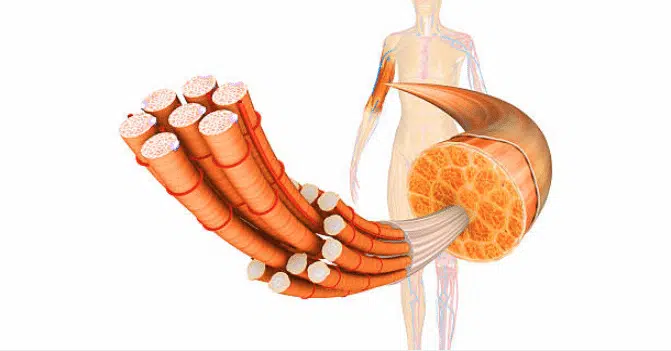No products in the cart.
ArthroFill Blog, arthrosis, Hyaluronic acid
Hyaluronic acid and fasciae (connective tissue)
Fascia are all fibrous connective tissue structures in the body. These include: ligaments (connection from bone to bone to hold a joint), tendons (connection from muscle to bone), muscle connective tissue, joint capsules and organ capsules. The fasciae are located under the subcutaneous tissue.
The fasciae can adapt wonderfully to new conditions: In the event of local stress, for example through regular exercise, the network reorganizes and develops more strongly. But unfortunately the complex network is also exposed to a lot of stress. Since the connective tissue is not supplied with blood, only movements ensure that the lymph fluid transports nutrients to the fascia and removes waste products. But if the muscle movements are missing, the fasciae can stick together. This is mainly due to the fibrinogen, which is more and more accumulated in the liquid, which is normally necessary to close wounds. It can also clump in the connective tissue if it is highly concentrated there because there is not enough exchange. The connective tissue fluid itself also plays a decisive role. Because the less water it contains, the more concentrated the substances it contains. Adhesion and hardening of the fasciae can accordingly also be attributed to insufficient binding of water. If there is not enough hyaluronic acid in the fascia, the amount of fluid becomes less and less and the connective tissue becomes more and more rigid and inflexible.
Sticky and hardened fasciae cause pain
Joint pain, back problems and a deterioration in mobility can be the result of sticky and hardened fasciae. Pain in particular, the cause of which cannot be determined even after a thorough examination, can often be traced back to sticky fasciae. Nerve endings are no longer adequately protected by the fascia, but can easily be squeezed. The close interaction of the receptors in the fascia then signals that something is wrong in the body without any injury or inflammation being apparent. Since the fasciae form a close-knit network, however, local adhesions can possibly have a negative effect on the entire organism over time.
Hyaluronic acid makes the fasciae smoother
With age, the amount of fluid in the fascia decreases more and more. The connective tissue becomes more immobile because the ratio shifts more and more towards the rigid collagen fibers, while the proportion of natural hyaluronic acid decreases. From around the age of 25, our body produces less of the multiple sugars. But not only the natural aging process, but also lack of exercise, obesity, stress and poor nutrition can cause problems for the fasciae. In addition to stretching exercises, massages and a balanced diet, the regular intake of hyaluronic acid can improve the fascia function and at the same time relieve pain in joints, muscles and tendons.

